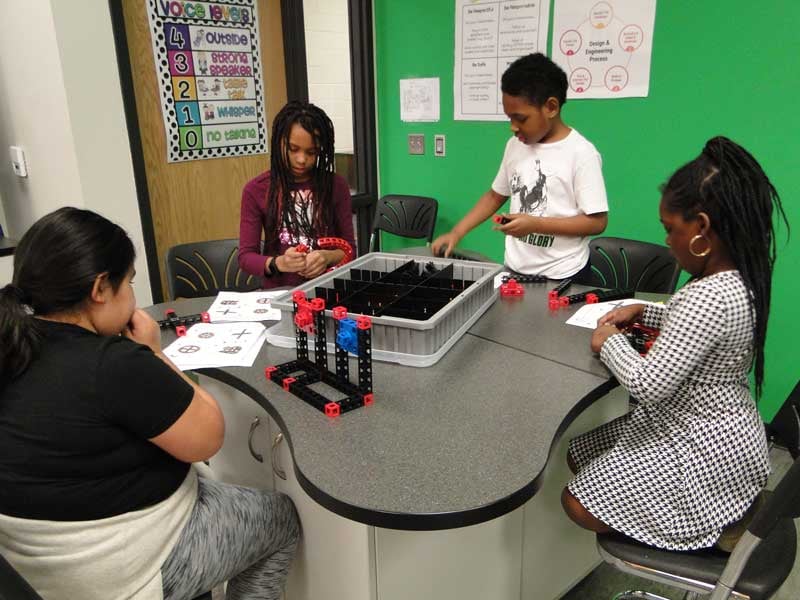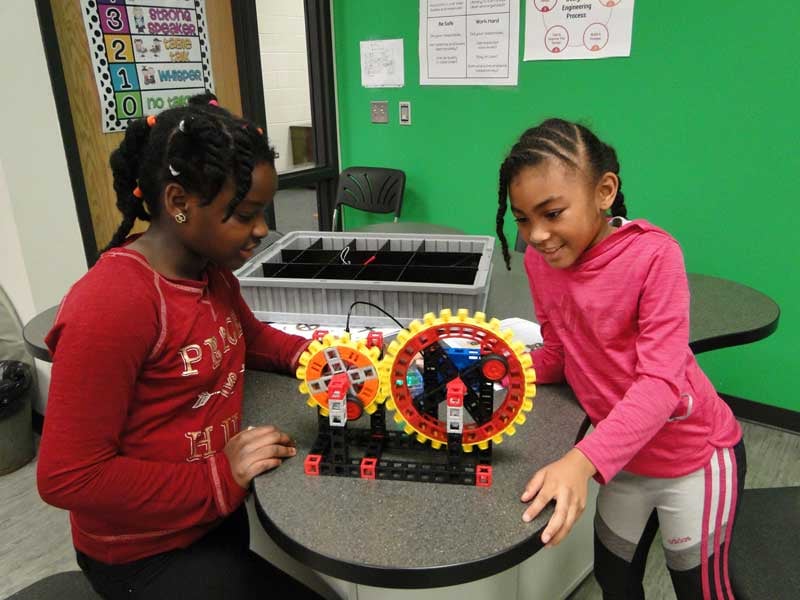Developing a Curriculum for 5th Grade STEM Education
The core concepts taught in 5th grade STEM bring together the foundational fluencies students have developed in their earlier education. At the 5th grade level, these ideas merge to bring scientific principles to life and show students how the concepts of STEM affect their everyday lives.
Core Components of 5th Grade STEM Curriculum
Despite subject matter, the core components of 5th grade curriculum in STEM should include: bringing real world applications to STEM subjects, integrating core concepts for more dimensional learning, and allowing students to experiment and create solutions using the concepts they have learned.
Bringing STEM Concepts to Life
In early STEM education, many core concepts are taught in a playful and experimental setting. Students learn the basics of STEM subjects like how to build things in a logical order, or how to identify patterns and sequences. While many lessons are hands-on, they can have a familiarity to them similar to standard classroom exercises.d
However, at the 5th grade level students are now familiar with these core concepts. They’ve experimented with the different elements of STEM and are more than familiar with the basic principles. In the 5th grade STEM curriculum, these core concepts come to life in new ways that don’t feel like rote classroom exercises.
Students can build tools that they can use to interact with the world around them, or manipulate code to make systems work in new ways. For 5th grade students, these exciting lessons feel less like schoolwork and more like fun exploration and experimentation which can inspire enthusiasm throughout their STEM education.
How STEM Relates to the Real World
In addition to combining STEM concepts and bringing them to life, a key component of 5th grade STEM curriculum is connecting STEM concepts to the real world. Students get to practice designing, building, and interacting with their creations to understand the concepts that make them work: movement, volume, proportions, and robotics are just some of the topics that are covered in the 5th grade STEM curriculum.

Through the design of each lesson, students get to see the real world application of STEM subjects and understand the role engineering plays in our day to day lives. These experiences can inspire a lasting interest in STEM.
Independent and Creative Design
With an established foundation in the fluencies of STEM, 5th grade STEM curriculum allows for more independent and creative design with the core skills and concepts of STEM. Students are empowered by the skills they’ve practiced for years (like sequences and basic building components), combine them with newer concepts (like articulating movement and applied mathematics), and put them all together to engineer entirely new creations that can be further measured, manipulated, and investigated.
This element of independent creative design can apply to the various subjects within 5th Grade STEM curriculum like structural and mechanical engineering, applied mathematics, coding, and robotics. With the freedom to design and create solutions of their own, students gain confidence in their ability to use technology to solve problems.
Developing a STEM Curriculum for 5th Grade
5th grade STEM curriculum is about jumping into the real world applications of science, technology, engineering, and mathematics. In programs like Kid Spark’s Pathways Lab, the curriculum covers a broad range of technologies that integrate STEM subjects together for engaging and exciting lessons.
Coding & Robotics
In our 5th grade STEM curriculum, students have been introduced to the basics of robotics in previous lessons, and are compounding new concepts based on our convergent learning format. They’ve covered analog and digital sensors, done basic drag and drop coding for If and If/Else statements, and by the 5th grade, students get to engineer and create their own designs and solutions in robotics and coding.
Students can manipulate and experiment with their own designs to practice the core concepts of each lesson. These kinds of opportunities allow students the freedom to engineer their own solutions and experiment with the concepts of STEM independently.
Structural & Mechanical Engineering
5th grade students have the fundamental elements of how to build something, but a key part of 5th grade STEM curriculum is integrating other concepts into engineering and further investigating how and why things are built a certain way. This opens up lessons to more complicated building concepts like proportions and curves, along with how to measure and understand their creations through dimensions and volume.
In the STEM Pathways Lab curriculum, students learn to understand different kinds of motion, how to design moving mechanisms, and how to explain these engineering concepts through applied mathematics. Integrating these core concepts for the 5th grade curriculum further expands the students’ understanding of their real world applications.
Applied Mathematics
In 5th grade mathematics, many students are learning how numbers are broken down into units and how to calculate those fractions, ratios, and percentages. Through integrated STEM education, these mathematical concepts can be brought to life with other STEM subjects to give students a more dimensional understanding.

One example is our “Ratios, Proportions, and Scale Drawings” lesson from the STEM Pathways Lab. In this lesson, students use physical engineering materials to build a three dimensional design, and learn about ratios, proportions, and scaled drawings. This integrates both engineering and mathematics into one effective and engaging lesson that gives a physical representation of the mathematical principles students are learning.
Developing a Lasting Interest in STEM
To encourage 5th grade students to pursue an interest in STEM, provide a curriculum that keeps them challenged, engaged, and creative. Letting them apply their STEM knowledge to create their own solutions allows students to exercise their creativity and ingenuity with independence.
The key to developing a lasting interest in STEM is to make it fun and interesting. Show students how the concepts they’re learning actually apply to the real world. Help them design tools they can use to solve problems, or set aside time for freebuilding and creative challenges that combine the different elements of STEM. These lessons bring core concepts to life in the hope of inspiring a lifetime of learning in the fields of STEM.
Kid Spark’s 5th Grade STEM Curriculum
Kid Spark’s STEM Pathways Lab is specially designed to develop STEM skills in a convergent learning system for students from 2nd grade through 5th grade. With integrated lesson plans and the necessary lab materials for each lesson, 5th grade students get a hands-on STEM education that prepares them for middle school concepts like loops and variables, simple and compound machines, and 3D printing and prototyping.
For more information on the STEM Pathways Lab, or our other programs solutions, connect with one of our program specialists to plan your STEM curriculum.
.png?width=1270&height=453&name=Copy%20of%20Kid%20Spark%20Logo%20(Horizontal%20-%20Full%20Color).png)
